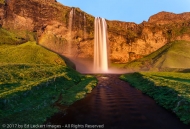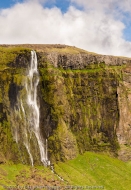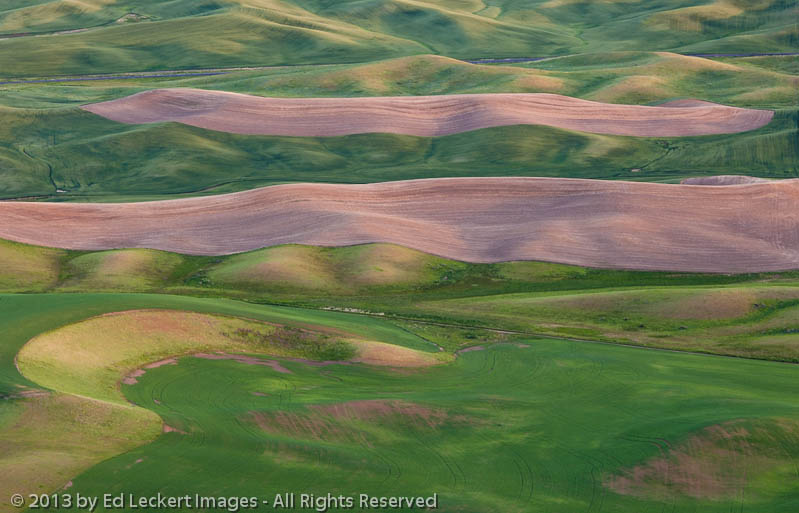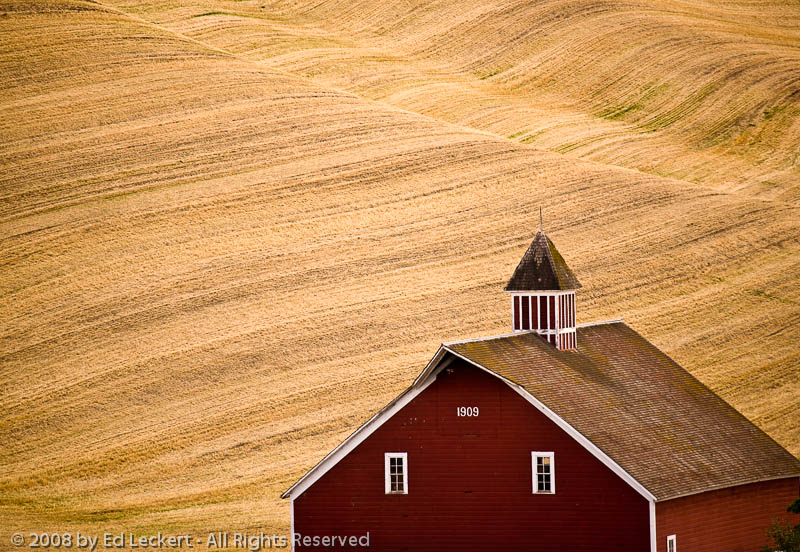


It’s an interesting world out there, and one of the things that makes it so interesting is the people you meet. But first, some background.
Back in December, Getty Images invited me to sign a contract with them and upload some of the photos in my Flickr Photostream for display on the gettyimages.com website. One of the images had a catch, though – they needed a property release from the owner to avoid legal trouble. It seems my image of a particular barn in The Palouse was easily identifiable, and Getty didn’t want to upset the owner by licensing images of it without permission.
The Palouse, for those who don’t know, is a loosely defined region in southeastern Washington State that contains some of the most fertile farmland in the world. It is also a photographer’s paradise. Why, you say. Farmland is boring, right? It’s just mile after mile of the same flat, featureless terrain, right? No. Not The Palouse. The Palouse, in addition to its significance as a food source, is living art. The peculiar and picturesque silt dunes which characterize the Palouse Prairie were formed as a result of the ice age, and provide the photographer and artist with endless combinations of patterns and shapes of all colors. The greens, yellows, and oranges, tans and browns of the fields juxtaposed against the blue sky and puffy white clouds could keep an artist busy for a lifetime.
 Anyway, if I wanted to upload for possible sale my image of the barn, which incidentally has always been one of my favorite images, I would need to find the owner and get a signed property release. Now finding the location would not be difficult as I always geotag my images. I do this by having an external GPS unit record my movements while on a shoot, and then use software to merge the “trip trace” of my travels with the images by comparing the timestamps of my images with the timestamps of my movements. No, the trick would be to find the owner of the barn. Did the owner live on site? Was the property owned by a huge corporation in New Jersey? Was it a local business with no one on site on the weekend when I would most likely arrive? I had no idea what to expect.
Anyway, if I wanted to upload for possible sale my image of the barn, which incidentally has always been one of my favorite images, I would need to find the owner and get a signed property release. Now finding the location would not be difficult as I always geotag my images. I do this by having an external GPS unit record my movements while on a shoot, and then use software to merge the “trip trace” of my travels with the images by comparing the timestamps of my images with the timestamps of my movements. No, the trick would be to find the owner of the barn. Did the owner live on site? Was the property owned by a huge corporation in New Jersey? Was it a local business with no one on site on the weekend when I would most likely arrive? I had no idea what to expect.
The photo was taken in 2008, and I was way overdue for a return trip to The Palouse anyway. I wanted to time the trip to capture the late Spring color that I had missed in 2008 when I arrived during harvest time, so this past weekend I headed east. I programmed my smartphone with the coordinates of the barn and it guided me to the exact spot where the photo was taken. Interesting, I thought. So much had grown up or been built in five years that you could only see the very top of the barn. Coming along that road on a shoot today I would not have bothered to stop.
Descending the gravel driveway to the property I came across a man washing his car. It would make a fine first impression to cover his freshly washed car in dust, I thought, so I stopped a good distance away and walked over to introduce myself and my mission. His name was Cory, and he could not have been nicer. He told me that his father was the owner of the barn, and promised to call ahead as he pointed me in the direction of the office.
His father came out to wave me in and invited me inside. The office was casual and comfortable, but a large conference room table told me that this was a place where serious business took place. The owner’s name was John Aeschliman (AE SH – uh l m eh n), the third generation of Aeschlimans from Switzerland that had taken up farming in The Palouse. His grandfather Fred had built the barn on the homestead in 1909 and it had been maintained in excellent condition by the family ever since. Yes, when he was young John had left the family business to go into construction, but he couldn’t stay away, and ultimately he returned to the family farm. But he didn’t just return. He returned with a mission. He pointed to a series of awards on the wall that he had received. It seems that John was a pioneer in the use of a farming technique known as no-till, or direct seed farming. This process eliminates the need to plow and turn the soil, thus resulting in much less soil erosion.
Just to give you an idea of how involved he is in no-till farming, a July 2008 article in Scientific American begins with the words “John Aeschliman turns over a shovelful of topsoil…”. He even has his own entry on imdb.com due to his appearance in a documentary called “Symphony of the Soil”, “an artistic exploration of the miraculous substance soil”. And he has worked closely with the Washington State University over the years.
The importance of erosion control cannot be overstated. I’m certainly no expert, but it’s pretty obvious that if we destroy topsoil faster than it can regenerate, we’re in big trouble. To see just how big, read the section in the Scientific American article called “Pay Dirt”. The line “geoarchaeological studies have now shown a connection between soil erosion and the decline of many ancient cultures” should hit close to home.
 Anyway, after educating this city boy about the importance of farming in general and of no-till farming in particular, John did agree to sign the property release for the image of his beautiful barn. And of course I gave him a signed print for his trouble, as is customary. I smiled as I thought about the fact that I had used “conservation materials” to mat this print that I was giving to a veritable giant in the business of conservation. I don’t know if John and his contemporaries will be able to save the world with their techniques, but it sure is comforting to know that smart, hardworking people with a passion to do the right thing are out there doing their best.
Anyway, after educating this city boy about the importance of farming in general and of no-till farming in particular, John did agree to sign the property release for the image of his beautiful barn. And of course I gave him a signed print for his trouble, as is customary. I smiled as I thought about the fact that I had used “conservation materials” to mat this print that I was giving to a veritable giant in the business of conservation. I don’t know if John and his contemporaries will be able to save the world with their techniques, but it sure is comforting to know that smart, hardworking people with a passion to do the right thing are out there doing their best.

What a fun adventure! I’m sure he and his family will cherish the beautiful photograph of the family barn.
very interesting background information about no-till farming. I was not familiar with it till just now 🙂 good photo too.
Thank you for sharing your adventure and fabulous photo’s.